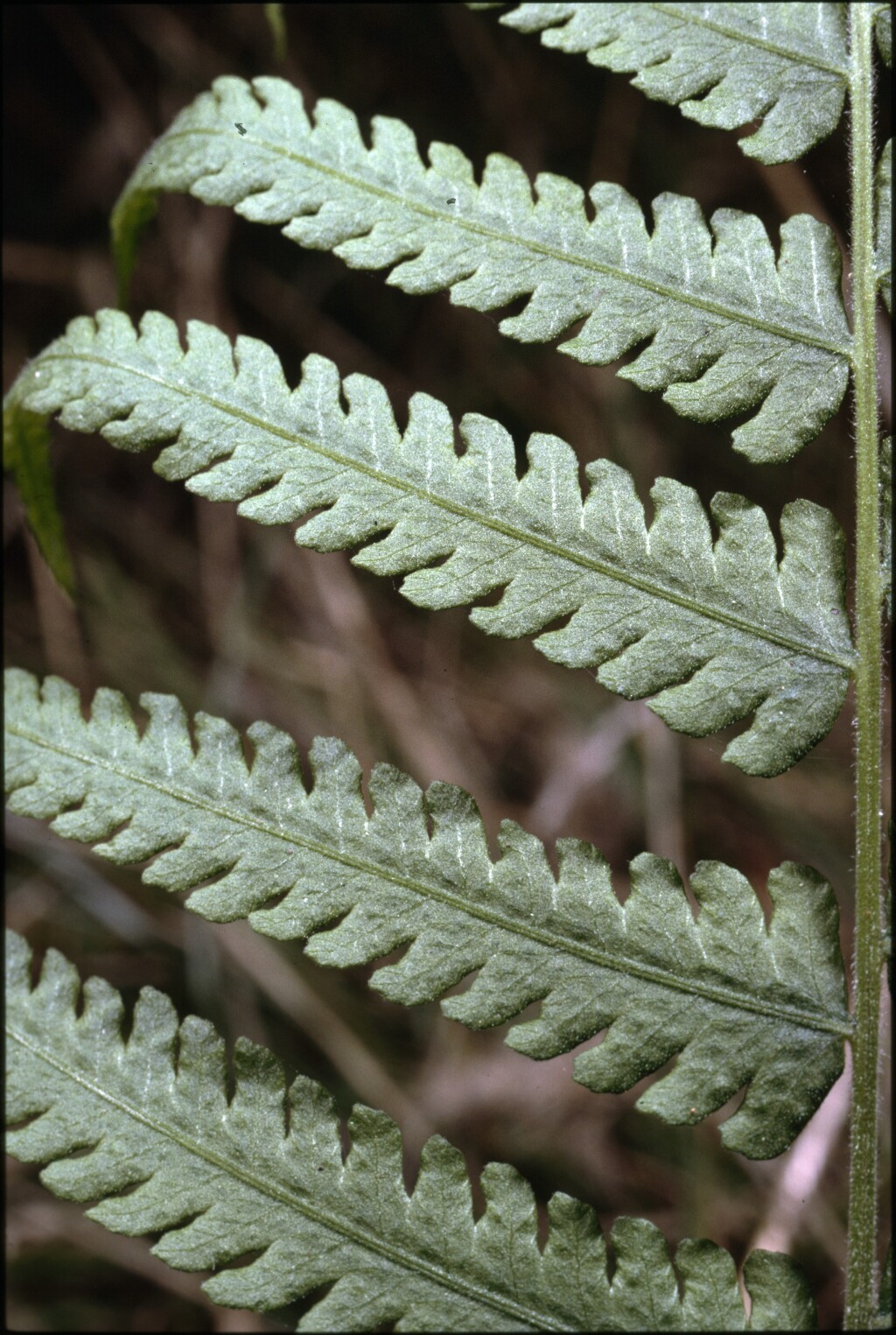Christella dentata
(Forssk.) Brownsey & Jermy BinungRhizome short and erect or very shortly creeping, sparsely covered in narrow brown scales. Fronds tufted, erect, 60–100 cm tall; stipe variable in length, almost succulent, densely hairy (giving young stipes a whitish bloom), flattened above, shallowly grooved, dark and scaly towards base. Lamina oblong-lanceolate, almost 2-pinnate, dark green to yellow-green, herbaceous, densely coated with short, pointed, multicellular hairs; rachis and pinna mid-rib deeply grooved (grooves not connecting), with numerous long, sometimes curved hairs. Pinnae narrow, tapering from base to acuminate apex; lobes short, oblong and slightly falcate, margins entire; lower pinnae well separated and progressively decreasing in length to become less than half as long as middle pinnae, basal lobes unequal; veins free except for lowest veins in adjacent lobes which join to form single excurrent vein. Sori copious, round; indusium kidney-shaped, covered with fine, pointed hairs; spores black.
GipP, WaP, EGU. All mainland States. Sri Lanka, Malaysia, Taiwan. In Victoria, naturally occurring populations are apparently confined to a very few sites near Buchan, where growing on moist, shaded, limestone-derived soils. A collection of C. dentata (1883) from Curdies River near Port Campbell is correctly determined, however, it is uncertain whether the locality information is correct. Curdies River is also a known site for the superficially similar Pneumatopteris pennigera. C. dentata is a common glasshouse weed and is occasionally found in disturbed suburban sites (e.g. Mt Martha). An 1865 collection from 'Murray cliffs' could have been collected in either South Australia, New South Wales, or Victoria. The species is known to occur along the Murray River in South Australia. .
Entwisle, T.J. (1994). Ferns and allied plants (Psilophyta, Lycopodiophyta, Polypodiophyta). In: Walsh, N.G.; Entwisle, T.J., Flora of Victoria Vol. 2, Ferns and Allied Plants, Conifers and Monocotyledons, pp. 13–111. Inkata Press, Melbourne.
 Spinning
Spinning




